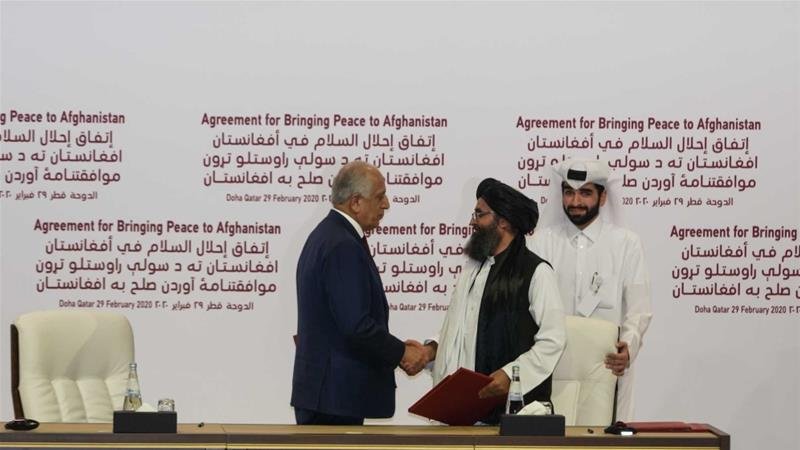
Here are the most important facets to the deal signed today.
It is done. The negotiations that took over a dozen rounds over the course of eighteen months. They coincided with a sharp escalation of the raging Afghan war, climaxing with the signing of a US-Taliban peace deal. The deal was signed between US Envoy Zalmay Khalilzad and Mullah Abdul Ghani Bradar Akhund. The released text of ‘The Agreement for Bringing Peace to Afghanistan between the Islamic Emirate of Afghanistan which is not recognised by the United States as a state and is known as the Taliban and the United States of America’ (quite a mouthful, we know) divides itself into four parts.
The deal stipulates that all US forces will be withdrawn within fourteen months of the signing of the agreement. The US also pledges to not involve itself in Afghan domestic affairs, and both sides express a desire to ensure positive relations in the aftermath of a creation of a new Afghan government following intra-Afghan negotiations.
The withdrawal is to take place in stages. The total number of US troops in Afghanistan to be reduced to 8,600, whilst the numbers of other coalition forces will be reduced proportionately, within 135 days of the signing of the agreement. Five military bases currently hosting US troops too will be evacuated in the same period.
A prisoner exchange between the Afghan government and the Taliban will take place, following which intra-Afghan negotiations will start. The total number of prisoners stand at around 6,000, with 5,000 Taliban prisoners held by the Afghan government and 1,000 government troops held by the Taliban. This exchange is proposed to be completed by the 10th March.
The launching of the intra-Afghan negotiations would also precipitate a formal administrative review of current US sanctions against Taliban members, with the aim to have these removed by August 27th 2020. Concurrently, the US would lobby and liaise with the other 4 Permanent UNSC members to remove Taliban members from the sanctions list. This will be aimed to be completed by May 29th.
Details as to the Taliban’s henceforth position vis-a-vis terrorist organisations such as Al-Qaeda are articulated in the agreement. The deal stipulates that the Taliban ‘will prevent them [Al Qaeda and co] from recruiting, training and fundraising and will not host them in accordance with the commitments of this agreement’. In another part, it is mandated that the Taliban ‘will not allow any of its members, other individuals or groups, including Al Qa’ida, to use the soil of Afghanistan to threaten the security of the United States and its allies.’
Of particular interest are the designation of the Taliban throughout the text as ‘the Islamic Emirate of Afghanistan which is not recognised by the United States as a state and is known as the Taliban’. Noteworthy too are the strict timelines given for the achievement of the given objectives of prisoner exchanges, troop withdrawals and intra-Afghan negotiations, as well as the yet vague mention of a complete ceasefire between the warring factions in Afghanistan deeper analysis on the aforementioned points of the momentous and historic deal, for the world and for Afghanistan in particular.